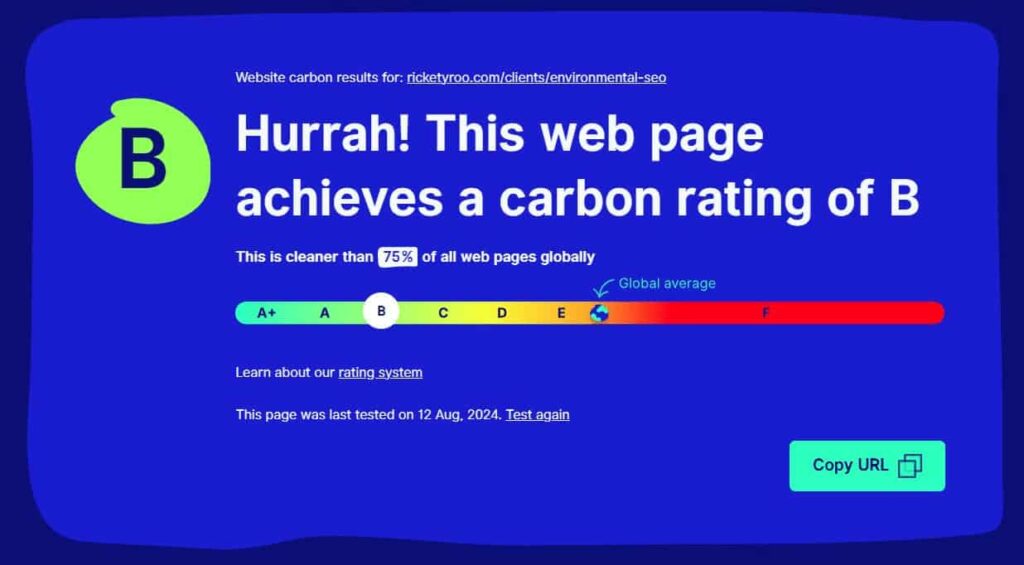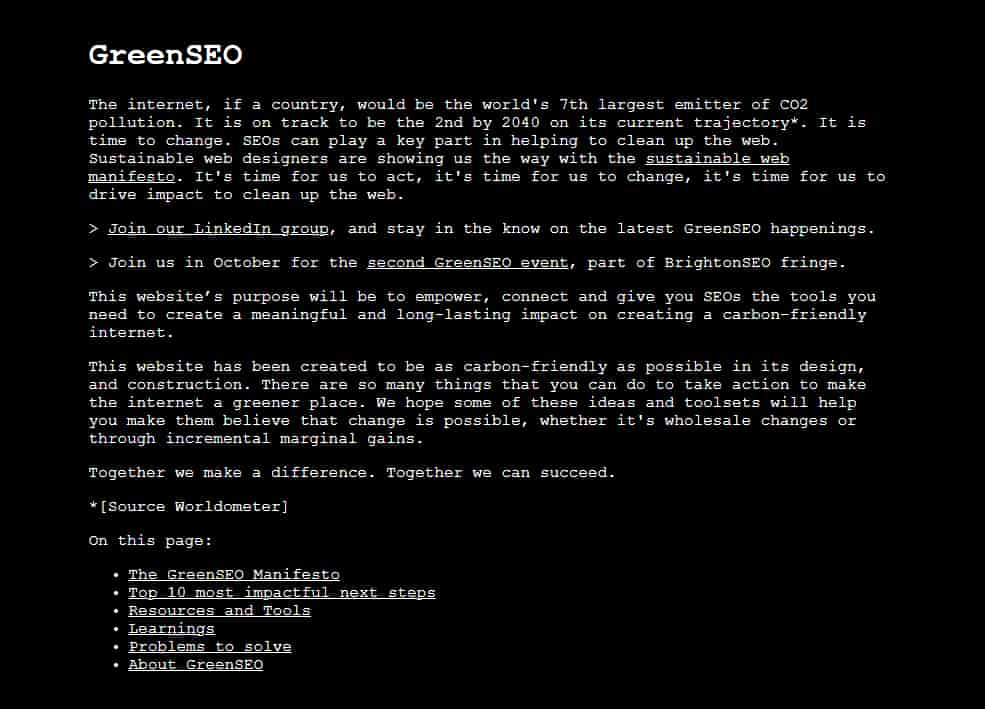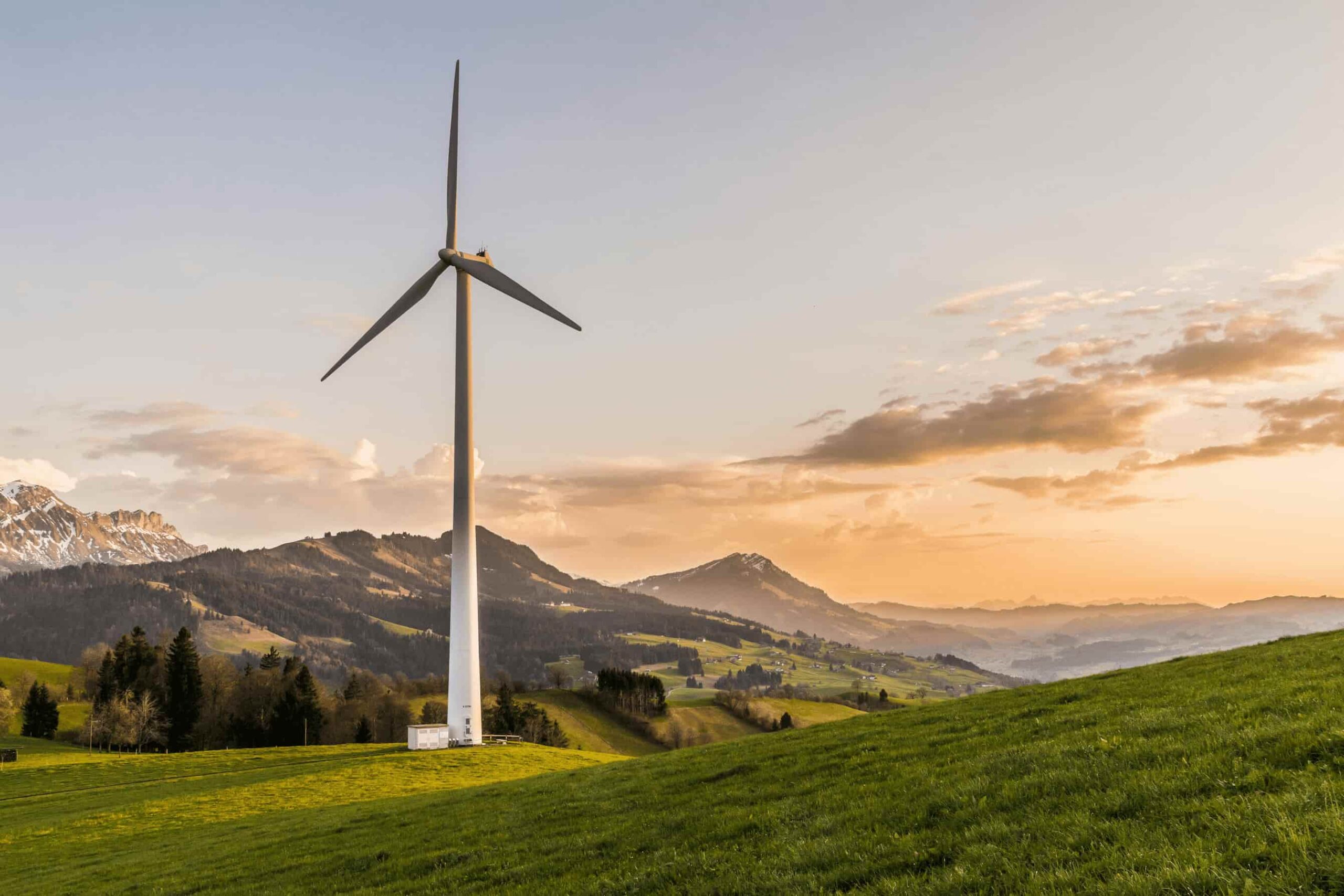If you’re anything like I was just a few months ago, you’re probably asking yourself: “what the heck does SEO have to do with climate change?” To put it in perspective and cite the awesome folks over at GreenSEO (whom I’ll be shouting out a lot throughout this post), “[t]he internet, if a country, would be the world’s 7th largest emitter of CO₂ pollution.”
The “why” here boils down to a simple fact: accessing a webpage requires energy, from the data center hosting the content to the devices transferring the data to the user.
Most energy used in that process is from carbon-emitting fossil fuels. Since SEO (and digital marketing more broadly) is about driving traffic to webpages, we must find ways to make our industry and websites less carbon-intensive. That’s what green SEO is all about. And good news for the results-oriented SEO purists out there:
Almost Everything About Green SEO is Good for Regular SEO
It may sound too good to be true, but if you know a thing or two about SEO you’ll notice that many of the following ideas are nothing new. From faster page load times to user experience optimization, green SEO is a “win-win” practice for users, traffic, and the environment. Let’s dig into the best and easiest steps you can take to reduce your website’s carbon footprint and environmental impact.
Measure Your Website’s Climate Impact
Just like you do with traffic and rankings, you have to start with a baseline to benchmark against and understand how you’ve improved. Is your website an energy-hungry, coal-spewing behemoth, or is it already light and efficient? I’m personally a fan of the Website Carbon Calculator, which can quickly show your site’s score on a letter-grade scale compared to the global average, how much CO₂ is produced when someone visits your page, and whether or not your site uses green hosting.

I recommend running the calculator for several different page templates (e.g. homepage, blog post, product/service page) on your site to get a good sitewide snapshot. After you’ve made improvements, you can check back to see how the grades have changed.
Invest in Green Hosting
Web hosting is your site’s most direct carbon impact: it takes a lot of energy to store a website’s files and keep them accessible 24/7. Fortunately, this is an impact you have control over.
The Green Web Foundation has a directory of green hosting providers that you can consult to find the best for your location, website, and business. In some cases, it’s no more expensive to go with a hosting provider powered by renewable energy than the alternative!
Site Speed Optimization
Page speed optimization is perhaps the biggest overlap between green SEO and traditional SEO. This is because a fundamental and easy aspect of page speed improvements is reducing page file size, such as by compressing images, removing unused code, and lazyloading objects. As I mentioned above, a website’s carbon footprint is largely due to the energy involved in storing and transferring data. When a page is smaller and more efficient, delivering it to a user takes less energy, and its carbon impact is lower.
Eco-Friendly Web Design
You’ll have to forgive me, an SEO, for talking about web design because it’s not my forte. However, it’s very much an aspect of environmentally friendly digital marketing! Here, the keyword is simplicity. To see an extreme example of this type of minimalism, check out the GreenSEO website. With dark mode, no imagery, and simple HTML coding, it’s about as eco-friendly as you can get (no wonder they scored an A+!)

Obviously, it’s not practical for everyone to strip their websites down to this level of simplicity, but consider going for a more minimal approach. A relatively unintrusive feature that many people enjoy is an optional dark mode, which saves end users energy on OLED displays.
Get Users to Their Answer Faster
A more efficient flow through your site’s pages is already a goal of good user experience. No one wants to click through link after link, hunting down the information or product they’re looking for.
And, by now, I bet you can guess why this is good for a greener website: fewer pages accessed extraneously means less data transmitted means less energy used means a lower carbon footprint!
Target the Right Keywords
Similar to user flow above, the most efficient user experience is when someone enters your site on the exact page they’re looking for. That’s what you want with traditional SEO, too: when your site appears in a SERP, the landing page should be the most relevant and useful for the searcher’s query.
On the flip side, it’s a good green SEO practice to not optimize for irrelevant keywords. Don’t waste users’ time and your hosting energy driving organic traffic to pages they’ll bounce off of!
Avoid AI Image Generation
According to one study, generating a single image with AI uses as much energy as it takes to fully charge a smartphone. This may not sound like much, but it can add up, especially if you have to iterate the image generation to find exactly what you need. Use images you already have for your business (such as product photos), turn to stock imagery websites, or hire a professional artist to create assets for you.
Small Steps Can Make a Big Impact
Hopefully, I’ve made the connection between good SEO practices and green SEO clear. Facing the massive issue of global warming feels daunting, but it helps to remember that there are steps we can take in our personal and professional lives that truly make a difference.
I’m lucky to work at a company like RicketyRoo that prioritizes the social responsibility of fighting climate change, and I know not every business can make that a priority. Now, at least, you know what you can do to make green SEO a part of your digital marketing strategy and earn a win-win for your organic traffic and the planet.
Wanna go green?
Schedule a discovery call with RicketyRoo
and find out how we can make your site eco-friendly.



